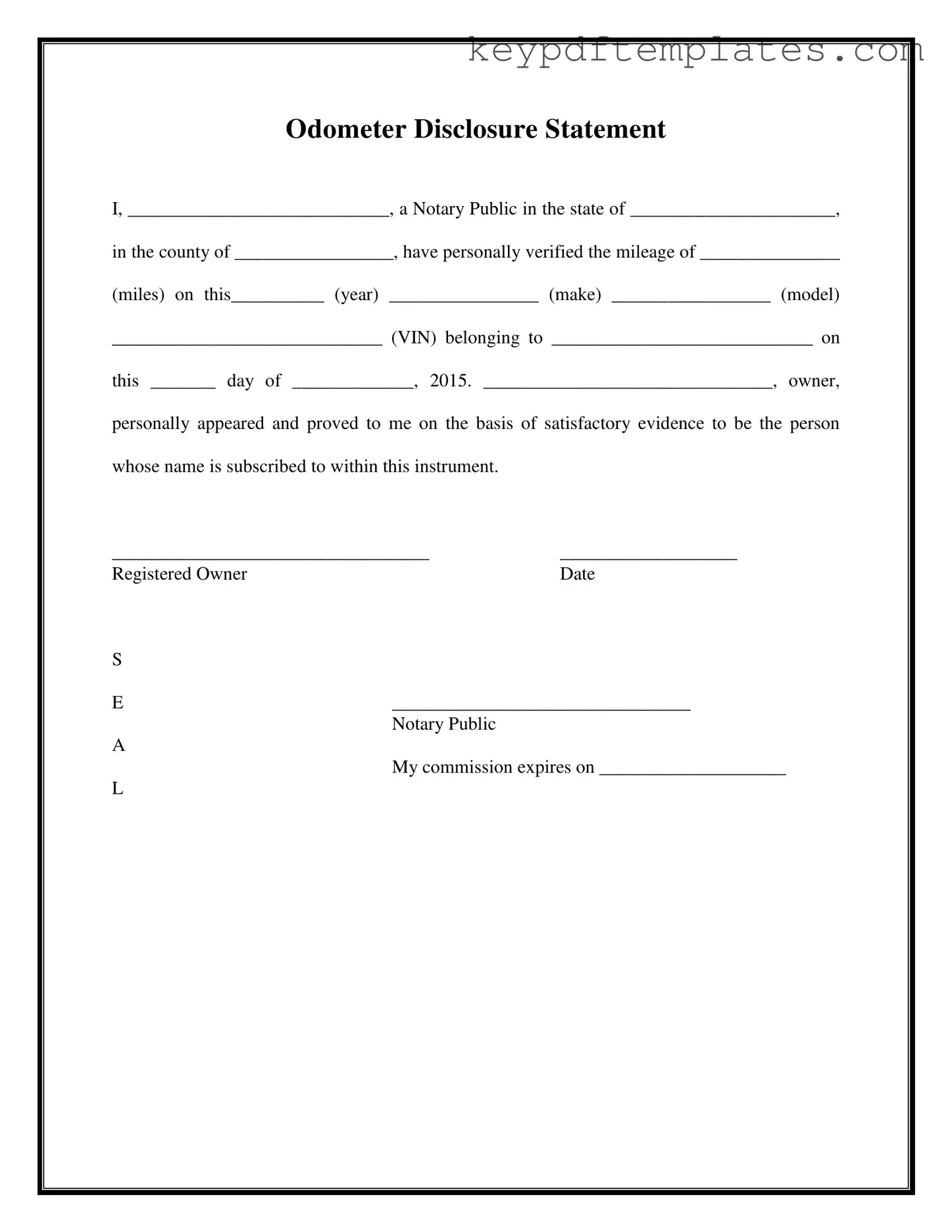Get Notarized Odometer Statement Form
The Notarized Odometer Statement is a legal document that verifies the mileage of a vehicle at the time of sale. This form is essential for both buyers and sellers, as it ensures transparency and protects against fraud. Completing this statement accurately can help facilitate a smooth transaction.
Modify Document Online
